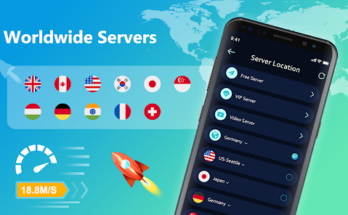In the rapidly evolving field of artificial intelligence, one of the most intriguing and controversial advancements is the ability to change faces in videos using AI technology. Known as “face swapping” or “deepfake” technology, this innovation allows for the seamless replacement of one person’s face with another in video footage. This capability has numerous applications, from entertainment and social media to more questionable uses such as misinformation and identity theft. In this article, we will explore the concept of face change in video AI, how it works, its features, the pros and cons, alternative technologies, and provide a comprehensive overview to help understand its impact and implications.
What is Face Change in Video AI?
Face change in video AI, often referred to as face swapping or deepfake technology, involves the use of artificial intelligence to alter or replace faces in video content. This process uses advanced machine learning algorithms to map the facial features of one individual onto another, creating a realistic and often indistinguishable result. The technology can be used for various purposes, including creating realistic special effects in movies, generating personalized video content, and more controversially, producing fake videos that can mislead or deceive viewers.
Key Definitions:
- Face Swapping: The process of digitally replacing one person’s face with another’s in a video.
- Deepfake: A specific type of AI-generated video where a person’s likeness is convincingly replaced with someone else’s, often used to create deceptive or manipulated content.
How Does Face Change in Video AI Work?
The process of changing faces in videos using AI involves several sophisticated steps and technologies:
1. Data Collection
To create a face swap, a significant amount of data is required. This includes high-resolution images and videos of both the source face (the face to be replaced) and the target face (the new face to be inserted).
2. Preprocessing
The collected data is preprocessed to ensure consistency and quality. This involves aligning the images and videos, normalizing the lighting conditions, and ensuring that the facial expressions and angles are matched as closely as possible.
3. Face Detection and Landmark Identification
AI algorithms detect the faces in the video and identify key landmarks such as the eyes, nose, mouth, and facial contours. This step is crucial for ensuring that the face swap is accurately aligned with the original video.
4. Model Training
Deep learning models, particularly Generative Adversarial Networks (GANs) and Autoencoders, are trained on the preprocessed data. These models learn to generate the target face in various expressions and lighting conditions, matching the source face’s movements and emotions.
5. Face Swapping
Once the model is trained, it can generate frames of the target face that match the source face’s movements and expressions. These frames are then seamlessly integrated into the video, replacing the source face with the target face.
6. Post-Processing
Post-processing techniques are applied to refine the swapped face, ensuring that it blends naturally with the rest of the video. This includes adjusting colors, lighting, and shadows to create a cohesive and realistic final product.
Features of Face Change in Video AI
Face change in video AI comes with a variety of features designed to create high-quality and realistic face swaps. Here are some key features:
1. High Accuracy and Realism
Advanced AI algorithms ensure that the swapped face is highly accurate and realistic, closely matching the original face’s movements, expressions, and lighting conditions.
2. Real-Time Processing
Some face change AI applications offer real-time processing capabilities, allowing for live face swapping during video calls or streaming.
3. Customization Options
Users can customize various aspects of the face swap, such as facial expressions, angles, and even blending levels, to achieve the desired result.
4. User-Friendly Interface
Many face change AI tools come with intuitive and user-friendly interfaces, making it easy for users to create face swaps without needing extensive technical knowledge.
5. Integration with Video Editing Software
Face change AI can be integrated with professional video editing software, allowing for more advanced editing and refinement of the swapped faces.
6. High-Resolution Output
The technology supports high-resolution video output, ensuring that the face swaps look crisp and clear even on large screens.
7. Multi-Face Swapping
Some advanced tools allow for swapping multiple faces within the same video, enabling complex scenes and interactions.
8. Secure and Private
Reputable face change AI providers ensure that user data is handled securely and that privacy is maintained throughout the process.
9. Cross-Platform Compatibility
Face change AI tools are often compatible with various operating systems and devices, ensuring broad accessibility and usability.
10. AI Training and Improvement
Continuous improvements and updates to AI models ensure that the technology stays up-to-date with the latest advancements, offering better performance and realism over time.
Pros of Face Change in Video AI
| Pros | Description |
|---|---|
| Enhanced Entertainment | Face swapping adds a new dimension to movies, TV shows, and social media content, enabling more creative and engaging productions. |
| Personalized Content | Users can create personalized videos for special occasions, such as birthdays or weddings, making them more memorable and unique. |
| Educational and Training Purposes | The technology can be used for educational purposes, such as creating realistic training simulations or historical reenactments. |
| Improved Visual Effects | Face swapping enhances visual effects in film and video production, reducing the need for expensive and time-consuming makeup or CGI. |
| Real-Time Applications | Real-time face swapping can be used in video calls and live streaming, offering new ways to engage and entertain audiences. |
| Accessibility | User-friendly interfaces and cross-platform compatibility make the technology accessible to a wide range of users, including non-experts. |
| Innovative Marketing | Brands and marketers can use face swapping to create innovative and engaging advertisements and promotional content. |
Cons of Face Change in Video AI
| Cons | Description |
|---|---|
| Potential for Misuse | Face swapping can be used to create misleading or deceptive content, such as deepfake videos that can harm individuals or spread misinformation. |
| Privacy Concerns | The use of personal images and videos raises privacy issues, especially if used without consent. |
| Ethical Issues | Ethical concerns arise regarding the manipulation of video content, potentially leading to false representation and loss of trust. |
| High Computational Requirements | Creating high-quality face swaps requires significant processing power and memory, which may not be available on all devices. |
| Legal Implications | The unauthorized use of someone’s likeness in face swaps can lead to legal issues, including copyright infringement and defamation. |
| Quality Limitations | The quality of the face swap depends on the quality of the source material; low-resolution or poor-quality input can lead to subpar results. |
| Time-Consuming Process | High-quality face swaps can be time-consuming to create, particularly for long videos or complex scenes. |
Alternatives to Face Change in Video AI
While face change in video AI offers impressive capabilities, there are alternative technologies and methods available for altering video content. Here are some notable alternatives:
| Alternative | Description |
|---|---|
| Traditional CGI | Computer-generated imagery (CGI) can create realistic face replacements and alterations, often used in film and TV productions. |
| Makeup and Prosthetics | Professional makeup artists and prosthetic experts can physically alter an actor’s appearance for various roles and scenes. |
| Motion Capture | Motion capture technology captures an actor’s movements and expressions, which can then be applied to a digital character or face. |
| Video Editing Software | Advanced video editing software like Adobe After Effects allows for manual face replacement and enhancement through compositing. |
| Stock Footage and Doubles | Using stock footage or body doubles can provide an alternative to face swapping for certain scenes, particularly in action or stunt sequences. |
| Voice and Audio Alteration | Altering the voice and audio in a video can complement visual changes, creating a more convincing and immersive experience. |
| 2D and 3D Animation | Animators can create entirely new faces and characters, providing a flexible and creative alternative to face swapping. |
Conclusion and Verdict on Face Change in Video AI
Face change in video AI is a groundbreaking technology that offers numerous possibilities for creativity, entertainment, and practical applications. Its ability to create realistic and high-quality face swaps opens up new opportunities in film, television, social media, and marketing. However, the technology also comes with significant ethical, legal, and privacy concerns that must be carefully considered. While the potential for misuse is a serious issue, responsible use and regulation can help mitigate these risks.
Overall, face change in video AI is a powerful tool that, when used ethically and responsibly, can enhance the way we create and consume video content. As the technology continues to evolve, it will be crucial to address the associated challenges and ensure that it is used in ways that benefit society.
FAQs on Face Change in Video AI
1. What is face change in video AI?
Face change in video AI involves using artificial intelligence to alter or replace faces in video content, creating realistic and seamless face swaps.
2. How does face change in video AI work?
The process involves data collection, preprocessing, face detection, model training, face swapping, and post-processing to ensure accurate and realistic results.
3. What are the applications of face change in video AI?
Applications include entertainment, personalized content creation, educational simulations, visual effects in film and TV, real-time face swapping in video calls, and innovative marketing.
4. What are the pros of face change in video AI?
Pros include enhanced entertainment, personalized content, educational uses, improved visual effects, real-time applications, accessibility, and innovative marketing.
5. What are the cons of face change in video AI?
Cons include potential for misuse, privacy concerns, ethical issues, high computational requirements, legal implications, quality limitations, and time-consuming processes.
6. Are there alternatives to face change in video AI?
Yes, alternatives include traditional CGI, makeup and prosthetics, motion capture, video editing software, stock footage and doubles, voice and audio alteration, and 2D and 3D animation.
7. Can face change in video AI be used for malicious purposes?
Yes, the technology can be misused to create misleading or deceptive content, such as deepfake videos, which can harm individuals or spread misinformation.
8. Is it legal to use face change in video AI?
The legality depends on how the technology is used and whether proper consent is obtained. Unauthorized use of someone’s likeness can lead to legal issues.
9. What are the ethical considerations of face change in video AI?
Ethical considerations include the potential for false representation, loss of trust, and the impact on individuals’ privacy and consent.
10. How can the risks of face change in video AI be mitigated?
Risks can be mitigated through responsible use, regulation, obtaining proper consent, and developing technologies to detect and prevent malicious deepfakes.




